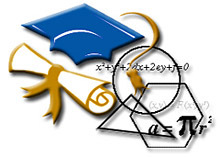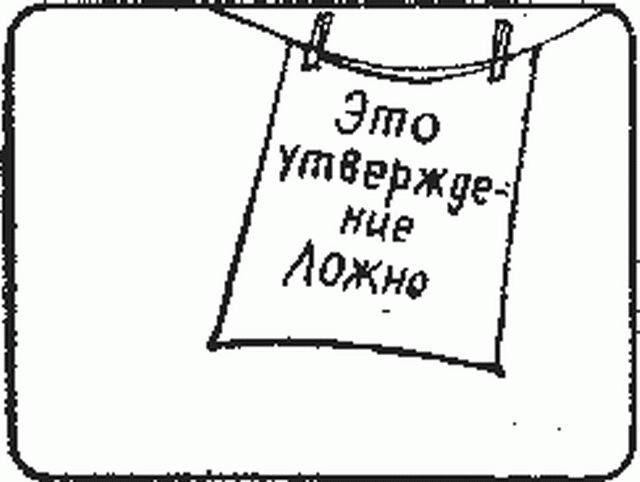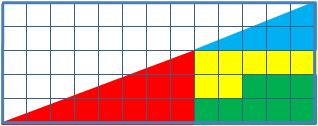In the world of mathematical paradoxes

Good day, dear habrasociety.
Today I would like to touch upon such a fascinating topic as mathematical paradoxes. Several wonderful articles have already been published on this topic on the hub ( 1 , 2 , 3 , 4 , 5 ), but in mathematics interesting paradoxes by this selection are far from exhausted.
Therefore, we will try to consider other entertaining paradoxes (and some of the “not quite” paradoxes), which have not yet received proper coverage here.
The Heap Paradox and the Bald Paradox
These paradoxes have been known since antiquity. To begin with, we formulate and consider the heap paradox associated with the uncertainty of the concept of “heap”:

“if you add a grain to one grain, then at what point does the heap form?”
or the inverse wording:
“removing one grain from a 1 million grain heap, from when does it cease to be a heap?”
The formulation of the paradox is based on the obvious premise, according to which one grain does not form a heap, and the inductive premise, according to which adding one grain to an aggregate that is not a bunch is not essential for the formation of a heap. From these assumptions it follows that no aggregate of an arbitrarily large number of grains will form heaps, which contradicts the concept of the existence of a heap of grains. Obviously, these considerations lead to incorrect conclusions.
However, until very recently it was not clear what reasoning to use here then. Only with the advent of the theory of fuzzy sets by Lofti Zadeh and fuzzy logic, it became clear that fuzzy reasoning is appropriate here, since there is a classic object of fuzzy logic - the vague concept of “being a bunch”. These objects in fuzzy logic are interpreted as having an inaccurate value, characterized by some fuzzy set.
According to such reasoning, the conclusion at each step remains the same, but the belonging of its correctness decreases with each step. When this affiliation falls below 50%, the opposite conclusion becomes more correct.
Similar reasoning can be applied to the bald paradox:
“If the hair from the head falls one at a time, from what moment does a person become bald?”
The Liar's Paradox

If the statement in the picture is true, then, based on its content, it is true that it is false; but if it is false, then what it affirms is false; therefore, it is not true that the statement in the picture is false, and, therefore, this statement is true.
The liar paradox demonstrates the discrepancy between colloquial speech and formal logic, introducing a statement that is both true and false. In the framework of formal logic, this statement is not provable and incontrovertible, therefore, there is no solution to this paradox, but there are various options for eliminating it.
For this, we can apply the reasoning used in the previous section, for this we assume that the statement is true at 0.5, then it is false at 0.5, that is, not every phrase can be called completely false or completely true - “in some way the statement lying in the picture, but in some way - telling the truth. ”
The same conclusion can be reached with the help of triple logic. It has three degrees of truth: “truth”, “false” and “indefinitely”. By "indefinitely" is meant an intermediate meaning between truth and falsehood. To this degree of truth and include the paradox of a liar.
As already mentioned, this is not a solution to the liar paradox, but just an explanation of why this paradox arises in the classical two-valued logic of utterances. They testify that a strict division of all statements into true and false in this case is not applicable, since it leads to a paradox.
At present, many adhere to this point of view that this statement is not a logical statement at all, and it is pointless to apply classical methods of formal logic to it.
Theseus paradox
This paradox can be formulated as follows:

“If all the components of the original object have been replaced, does the object remain the same object?”
Several solutions to this paradox have been proposed. According to the philosophical school of Aristotle, there are several reasons describing the object: the form, material and essence of the thing (which, according to the teachings of Aristotle, is the most important characteristic). Proceeding from this, the ship remained the same, since its essence has not changed, only the worn material has changed.
In the next decision, it was proposed to give the “same” argument a quantitative and qualitative characteristic. In this case, after changing boards, Theseus’s ship will turn out to be quantitatively the same, and qualitatively, to be another ship.
Recently, to solve Theseus’s paradox, it was proposed to use a 4-dimensional interpretation, in which a 3-dimensional ship also has a length of 4 dimension-time. The resulting 4-dimensional ship over time series is quantitatively identical with itself. But individual "time slices" can be qualitatively different from each other.
The Paradox of Abilene

This paradox is that a group of people can make a decision that contradicts the possible choice of any of the members of the group due to the fact that each individual believes that his goals are contrary to the goals of the group, and therefore does not mind.
The paradox was described by Jerry Harvey in The Abilene Paradox and other Meditations on Management. The name is given to the paradox based on the following anecdote described in this article:
One hot Texas evening, a certain family played dominoes on the porch until the father-in-law offered to go to Abilene for lunch. The wife said: “That sounds good.” The husband, despite the fact that the trip promised to be long and hot, thought that it would be necessary to adapt to others, and said: “In my opinion, not bad; I hope that your mother will not refuse. ” My mother-in-law answered: “Of course, let's go! I have not been to Abilene for a long time. "
The road was hot, dusty and long. When they finally arrived at the cafeteria, the food was tasteless. Four hours later, they, exhausted, returned home.
One of them said insincerely: "Is it true that the trip was good?" My mother-in-law said to this that, in fact, she would have been better off staying at home, but she had gone, since the other three were full of enthusiasm. The husband said: "I would be glad not to go anywhere, I went only to give the rest pleasure." The wife said: “And I went, counting on the joy of the others. You had to be crazy to voluntarily go on this trip. " Father-in-law replied that he suggested this only because he thought the rest was bored.
And they sat stunned by the fact that they went on a trip that none of them wanted. Each of them would rather calmly enjoy that day.
This paradox is easily explained by various sociological sciences, confirming that a person rarely does things contrary to the actions of his group. I think many have come across this paradox more than once in their lives.
The Simpson Paradox and the Will Rogers Phenomenon
I note that these paradoxes are "apparent", that is, they can occur at an intuitive level, but if you make calculations, it is easy to make sure that no paradox arises.
To illustrate the Simpson paradox, consider the example described by the famous mathematician popularizer Martin Gardner .
Suppose we have four sets of stones. The probability of pulling out the black stone of set No. 1 is higher than from set No. 2. In turn, the probability of pulling out the black stone from set No. 3 is greater than from set No. 4. Combine set No. 1 with set No. 3 (we get set I), and set No. 2 - with set No. 4 (set II). Intuitively, you can expect that the probability of pulling a black stone from set I will be higher than from set II. However, in the general case, such a statement is false.
An example in which the Simpson paradox is fulfilled:
| Black balls | White balls | Chance to pull out black stone | |
|---|---|---|---|
| Set number 1 | 6 | 7 | 6/13 ≈ 0.4615 |
| Set number 2 | 4 | 5 | 4/9 ≈ 0.4444 |
| Set number 3 | 6 | 3 | 6/9 ≈ 0.6667 |
| Set number 4 | 9 | 5 | 9/14 ≈ 0.6429 |
Now we mix sets No. 1 and No. 3 - from which black stones can be pulled out with a higher probability and sets No. 2 and No. 4 - from which black stones can be pulled out with a lower probability.
| Black balls | White balls | Chance to pull out black stone | |
|---|---|---|---|
| Set I | 12 | 10 | 12/22 ≈ 0.5454 |
| Set II | thirteen | 10 | 13/23 ≈ 0.5652 |
As we see from the table, after mixing, the probability of pulling out a black stone from set II became higher than from set I. There is
no mathematically paradox here, since the overall probability of a set depends on the ratio of the number of black stones and both colors, in this case in 4 sets there were 9 black stones, and in the first 7 white stones, which most of all influenced the final alignment.
Close to the Simpson paradox and the phenomenon of Will Rogers. In fact, they describe the same phenomenon, but in different terms.
I think many times came across phrases like this:
"When the oaks left Oklahoma and moved to California, they increased the average intelligence of both states."
This phrase is attributed to Will Rogers, in honor of which the phenomenon got its name.
From the point of view of mathematics, there is no paradox here either. To verify this, it is enough to consider two sets: the first is {1, 2}, and the second is {90,100}, if the number 90 is transferred from the second set to the first, the arithmetic mean of the elements of both the first set and the second will increase.
Cell disappearance

A wide class of tasks for rearrangement of figures with signs of sophism: initially, a masked error was introduced into their condition. To some extent, these tasks are closer to optical illusions than to mathematics.
For example, consider one similar problem: given a rectangular triangle of 13 × 5 cells, composed of 4 parts. After the rearrangement of the parts, while preserving the initial proportions visually, an additional cell not occupied by any part appears.
Mathematically, there are no paradoxes or the mysterious disappearance of the area. The visually observed triangles, in fact, are not, the hypotenuses in both pseudo-triangles are actually broken lines (in the first triangle it has a kink inward, and in the second - outward). If you put a triangle on top of each other, then between their “hypotenuses” a parallelogram is formed, in which the “missing” area is contained.
Instead of a conclusion
To my great regret, it is impossible to consider all interesting mathematical paradoxes (and “not quite” paradoxes) within the framework of one article. But I hope that this article did not leave you indifferent, and I will be very glad if you decide that you did not waste your time reading.
